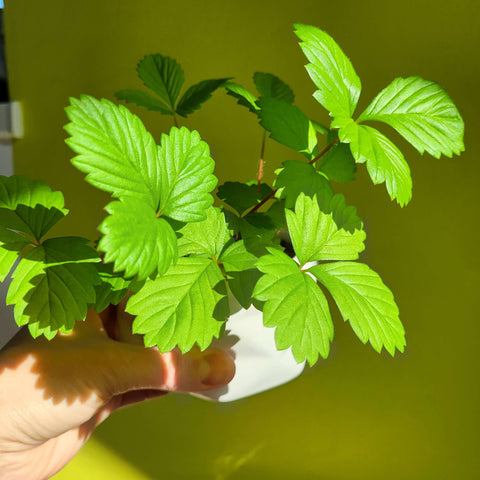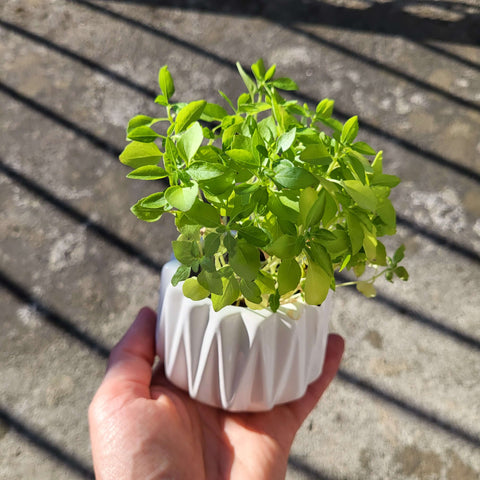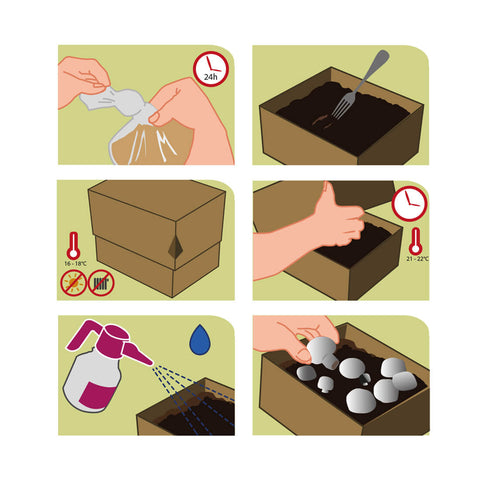Preparing and growing strawberries in containers is a topic that attracts both beginners and experienced gardeners. Growing strawberries in this way allows for control of growing conditions, optimization of space, and easier protection from pests. That is why we recommend growing strawberries in containers to all those individuals who do not have the opportunity to grow strawberries in the garden, or are too busy, not at home, and have difficulty finding time for the garden during the day.
Strawberries can be planted in containers with a lid or in mini greenhouses. In both cases, the berries develop faster because they are covered and thus retain heat. In either case, they must be in adequate light.
Important facts you need to be aware of when growing strawberries
🌿 Choosing a container and substrate
You can first plant strawberry seeds in biodegradable containers, and when the seedlings emerge from the soil, transplant them into larger ones. Choose a suitable container, which should be deep and wide enough, ideally at least 20-30 cm deep and wide, to ensure enough space for the root system. Drainage holes at the bottom of the pot are essential to prevent water stagnation and root rot.
The substrate should be rich, well-drained and slightly acidic (pH between 5.5 and 6.5). A mixture of good quality potting soil, compost and perlite or vermiculite will provide good growing conditions. Adding a slow-release fertiliser will provide the plants with the nutrients they need throughout the season.
🌿 Selection of strawberry varieties
Choosing the right variety is key to success. Some varieties are better suited to growing in containers than others. Day-neutral varieties like 'Albion' or 'Seascape' produce continuously throughout the season, while June-blooming varieties like 'Honeoye' or 'Earliglow' produce most of their fruit in a short period of time.
🌿 Planting process
If you plant strawberries from seeds in containers yourself, plant them on the surface of the soil, covering them slightly with soil, as the seeds should not be planted too deep. Then water them carefully, preferably with a shovel, so that the seeds do not become waterlogged and the soil does not squeeze them out. During the growing season, the soil should always be moist, not too wet. Place the containers in a warm and bright place.
However, once we have the strawberry seedlings ready, we first soak them in water to keep the roots well hydrated. The plant is then potted so that the root ball remains just below the surface of the substrate. It is important that the crown (the point where the roots turn into stems) remains above the ground, as covering it can lead to rotting.
🌿 Plant care is a key factor for good growth
Watering
Strawberries need regular watering, as they are drought tolerant. At the same time, it is important not to allow water to stagnate, which can lead to root rot. Use the bottom watering method, which encourages deep root growth.
Fertilization
Fertilize the plants with a balanced liquid fertilizer once a month during the growing season. Excess fertilizer can cause excessive leaf growth to the detriment of the strawberry crop.
Pruning and care
Removing dead leaves and stems will reduce the risk of disease. It is also important to regularly inspect the plants and remove whiskers, as they can drain the plant of energy and reduce yield.
🌿 Advantages of growing in containers
Growing strawberries in containers has several advantages. Containers can be placed in optimal locations for sunlight, pests and diseases are easier to control, and growing in containers also allows strawberries to be grown on balconies and patios for those who do not have access to a garden. Growing in containers also avoids problems with soil that may be contaminated or have poor structure.
🌿 Pest and disease control
One of the main advantages of growing in containers is easier pest and disease control. Strawberries are susceptible to many pests such as slugs, snails, spider mites and aphids, as well as diseases such as gray mold and powdery mildew. Regular inspections and preventive measures, such as the use of natural insecticides and fungicides and the removal of affected plant parts, are essential for maintaining healthy plants.
🌿 Wintering strawberries
Most strawberry varieties need a dormant period at low temperatures to produce fruit the following year. In colder climates, containers can be moved to cool but protected areas such as garages or basements where temperatures do not drop below freezing. In warmer climates, plants can remain outside if protected from extreme weather conditions.
🌿 Possible problems and their solutions
Excessive watering
Symptoms of overwatering include yellowing leaves and root rot. To prevent this problem, ensure good drainage and water only when the top layer of the substrate is dry to the touch.
Lack of fruit
This can be caused by a lack of nutrients, inadequate light conditions or excessively high temperatures. Ensuring balanced fertilization and optimal container placement can improve the situation.
Diseases and pests
Regularly inspecting plants and using natural remedies such as soapy water against aphids or manually removing slugs can prevent major outbreaks of pests and diseases.
🌿 Mini greenhouse with strawberries
Growing strawberries in a mini greenhouse is a great alternative to show your children gardening up close. A mini greenhouse is very suitable for children, where they can observe how quickly the plant grows.
You can grow delicious strawberries in pots. All you need is regular care, a little knowledge, and enjoyment!
Growing strawberries in pots is an interesting and productive hobby that can bring you fresh fruit right to your doorstep or balcony. By following these guidelines and regular care, you can ensure healthy plants that will bear fruit abundantly. Advantages such as easier control of growing conditions, minimizing the risk of pests and diseases, and the ability to grow in limited areas make strawberries in pots attractive to all gardeners, regardless of their experience or living space.



